
1
1
IAS 12:
Income tax
© 2012 Deloitte Touche Tohmatsu
Definitions
─Temporary difference: a difference between the carrying
amount of an asset or liability and its tax base.
─Taxable temporary difference: a temporary difference that
will result in taxable amounts in the future when the
carrying amount of the asset is recovered or the liability is
settled.
─Deductible temporary difference: a temporary difference
that will result in amounts that are tax deductible in the
future when the carrying amount of the asset is recovered
or the liability is settled.
© 2012 Deloitte Touche Tohmatsu
- Current tax for the current and prior periods should be recognised
as a liability to the extent that it has not yet been settled, and as an
asset to the extent that the amounts already paid exceed the amount
due.
- The benefit of a tax loss which can be carried back/forward to
recover current tax of a prior/future period should be recognised as
an asset.
- Current tax assets and liabilities should be measured at the amount
expected to be paid to (recovered from) taxation authorities, using
the rates/laws that have been enacted or substantively enacted by
the balance sheet date
Current tax
© 2012 Deloitte Touche Tohmatsu

2
- Recognised for all taxable temporary difference
- 3 exceptions
liabilities arising from initial recognition of goodwill
liabilities arising from the initial recognition of an asset/liability
other than in a business combination which, at the time of the
transaction, does not affect either the accounting or the taxable
profit; and
liabilities arising from undistributed profits from investments
where the entity is able to control the timing of the reversal of
the difference and it is probable that the reversal will not occur
in the foreseeable future.
Deferred Tax Liabilities
© 2012 Deloitte Touche Tohmatsu
- Recognised for deductible temporary difference
- Unused tax loss/credit
To the extent that it is probable that taxable profit will be
available against which the deductible temporary differences
can be utilised, unless the deferred tax asset arises from:
the initial recognition of an asset or liability other than in a
business combination which, at the time of the transaction,
does not affect the accounting or the taxable profit.
Deferred tax assets
© 2012 Deloitte Touche Tohmatsu
- The carrying amount of DTA should be reviewed at the end
of reporting period and reduced to the extent that it is no
longer probable that sufficient taxable profit will be
available to allow the benefit of part or all of that deferred
tax asset to be utilised.
- Any such reduction should be subsequently reversed to the
extent that it becomes probable that sufficient taxable profit
will be available.
Deferred tax assets (cont’d)
© 2012 Deloitte Touche Tohmatsu

3
- At tax rate that are expected to apply to the period when the
asset is realised or the liability is settled (liability method),
based on tax rates/laws that have been enacted or
substantively enacted by the end of the reporting period.
- Reflect the entity's expectations, at the balance sheet date, as
to the manner in which the carrying amount of its assets and
liabilities will be recovered or settled
Deferred tax assets and liabilities should not be discounted.
Measurement
© 2012 Deloitte Touche Tohmatsu
- Current tax assets and current tax liabilities should be offset
on the balance sheet only if the entity has the legal right
and the intention to settle on a net basis.
- Deferred tax assets and deferred tax liabilities should be
offset on the balance sheet only if the entity has the legal
right to settle on a net basis and they are levied by the same
taxing authority on the same entity or different entities that
intend to realise the asset and settle the liability at the same
time.
Presentation
© 2012 Deloitte Touche Tohmatsu
9
Q&A
© 2012 Deloitte Touche Tohmatsu

4
10
Structure of Deloitte. Deloitte refers to one or more of Deloitte Touche Tohmatsu Limited, a UK private company limited by
guarantee, and its network of member firms, each of which is a legally separate and independent entity. Please see
www.deloitte.com/about for a detailed description of the legal structure of Deloitte Touche Tohmatsu Limited and its member
firms.
Deloitte Vietnam Company Ltd. (“Deloitte Vietnam” or “Party B” in this contract) and its affiliated entities is the Vietnam
affiliate of a member firm of the Deloitte Network namely Deloitte South East Asia Ltd (“DSEA”). The “Deloitte Network” is
an association of firms that are members of DTTL. Neither DTTL nor any of its affiliates, nor any member firm of DTTL or
any of their affiliated entities has, except as expressly provided herein, any liability for each other’s debts, obligations, acts or
omissions. Each member firm of DTTL and each of its affiliates is a separate and independent legal entity operating under the
names “Deloitte”, “Deloitte & Touche”, “Deloitte Touche Tohmatsu” or other related names; and services are provided by
member firms or their subsidiaries or affiliates and not by DTTL.

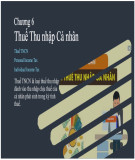


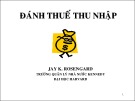
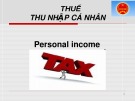
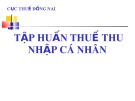
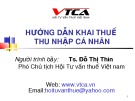
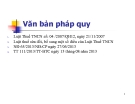
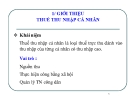
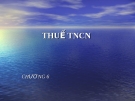
![Đề thi Nguyên lý kế toán học kì 2 năm 2024-2025 có đáp án (Lần 2) - [Kèm đề thi kết thúc học phần]](https://cdn.tailieu.vn/images/document/thumbnail/2025/20250911/kimphuong1001/135x160/98991757577228.jpg)














